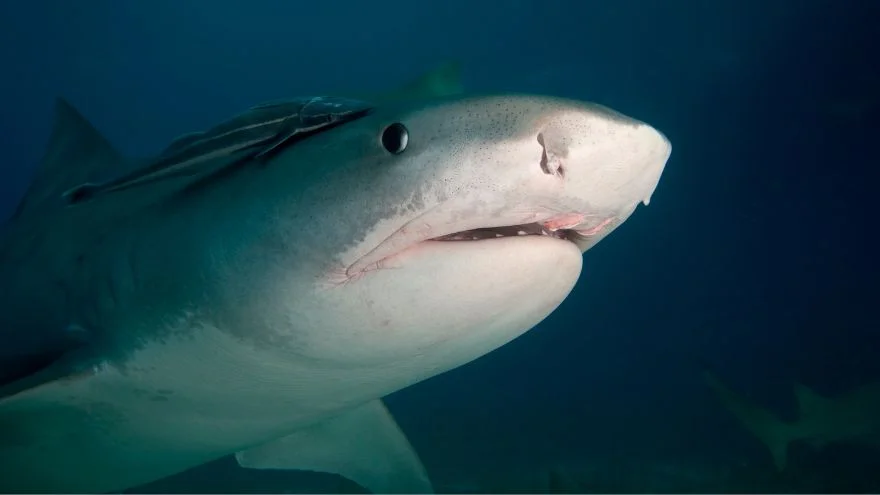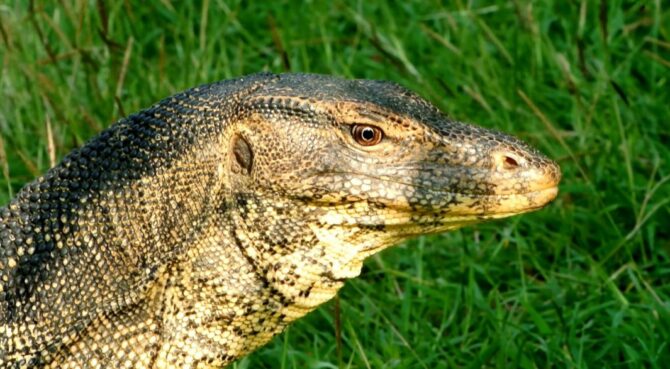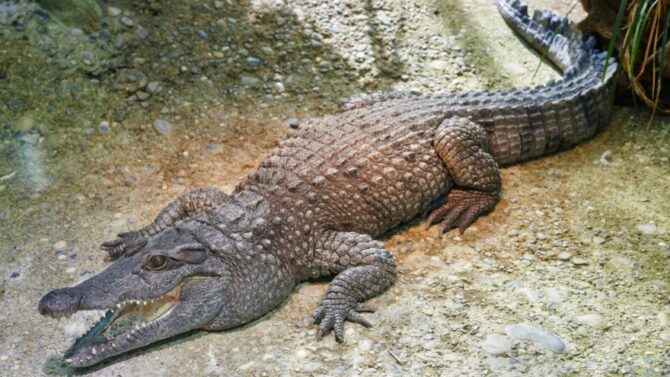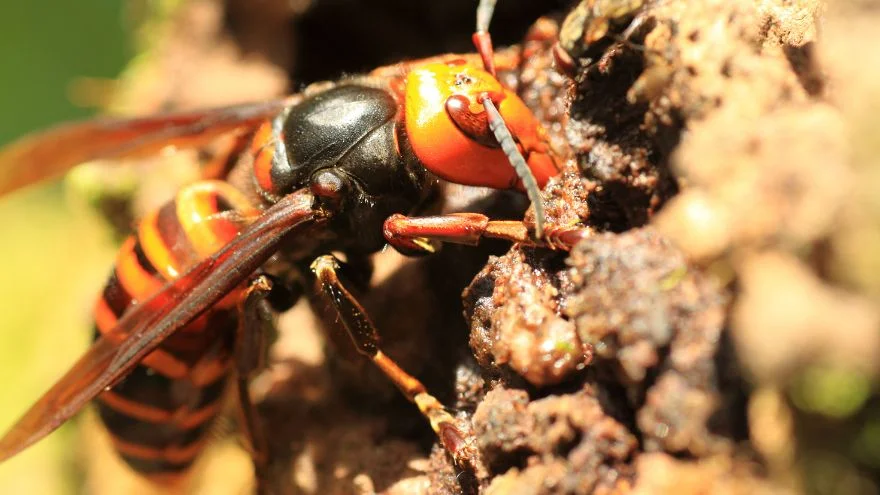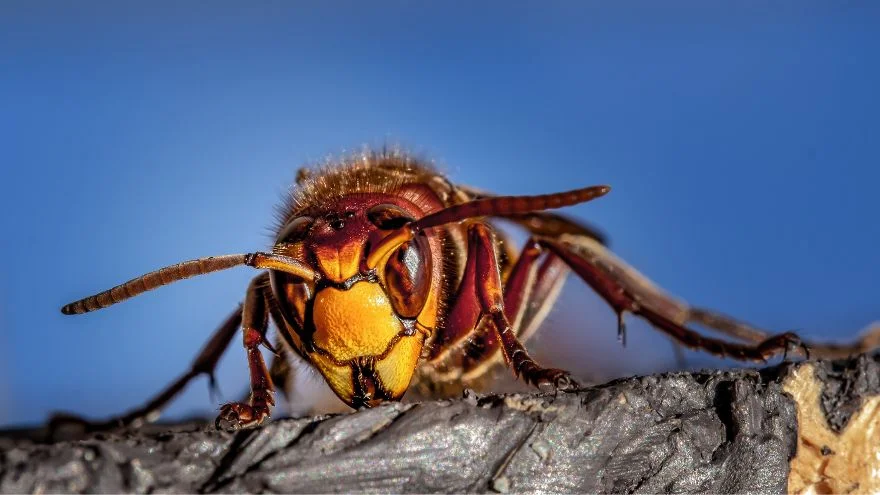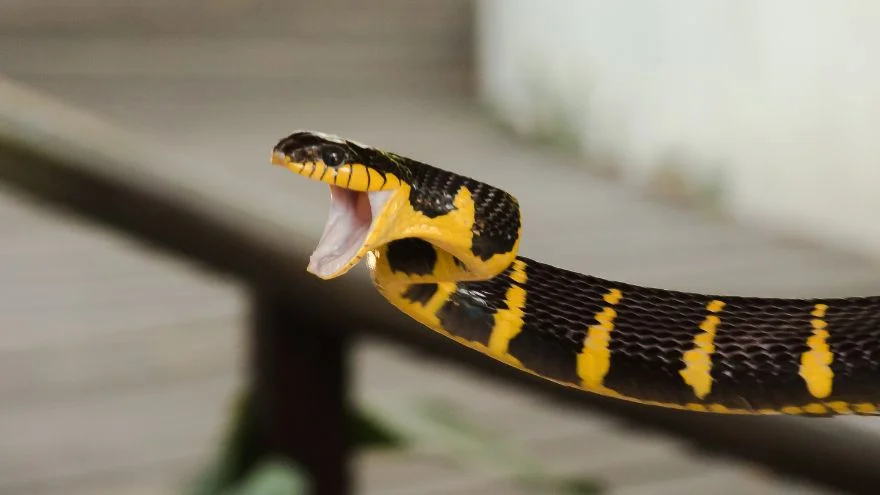Undoubtedly, exotic marine life exists in the coral islands, some of which are deadly. The most dangerous animals in the Maldives include sharks, red lionfish, stingrays, cone snails, etc.
It makes sense why so many vacationers consider the Republic of Maldives an ideal location.
The attractive island nation is well-known for many things, including its dynamic culture, alluring landmarks, immaculate beaches, and abundant flora and fauna.
With such vast wildlife, you may wonder if any of the deadliest animals in the world also inhabit there.
While there aren’t any muscular and monstrous-looking mammals in the coral islands to worry about, there are a few marine species you need to be aware of before visiting.
Let’s look at some of the most dangerous creatures in the Maldives and what to do if you come across them.
What are the Most Dangerous Animals in the Maldives?
1. Grey Reef Shark

- Scientific name: Carcharhinus amblyrhynchos
- Class: Chondrichthyes
- Habitat: Shallow tropical and subtropical waters, coral reefs
- Diet: Carnivore
- Conservation status: Near threatened
The Maldives is a top diving location and has an amazing fish population.
More than 20 different shark species, including the grey reef shark, a species that divers typically see at shark feeding stations, may be found in the Maldives. Thanks to the abundance of coral reefs and diverse marine life.
The aggressive attitude of the grey reef shark aids in its dominance over other species.
As a warning that it is ready to attack, it performs a threat display and is the first shark species to do this.
According to the International Shark Attack File, the grey reef shark has been responsible for eight verified cases of fatal attacks on people.
2. Red Lionfish
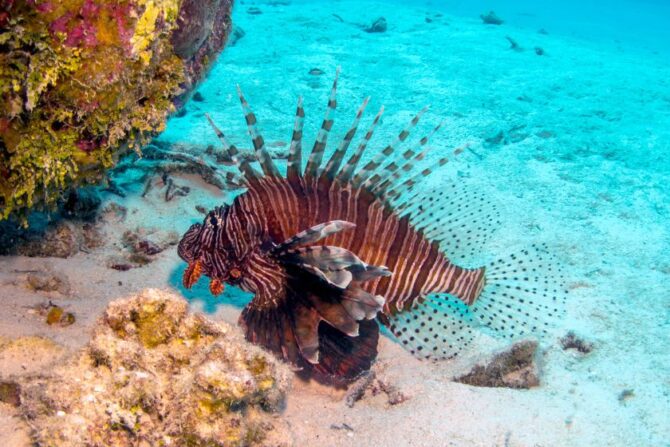
- Scientific name: Pterois volitans
- Class: Actinopterygii
- Habitat: Shallow and artificial coral reefs, holes and crevices, tropical waters, and all marine habitats
- Diet: Carnivore
- Conservation status: Not threatened/endangered
The Red lionfish is an aggressive, venomous coral reef fish that has slowly but surely spread over the Caribbean Sea.
Although it lacks any traits of the Scorpionfish family, it has a striking appearance that resembles a member of that family.
The coral and stony reefs offshore and close to shore, down to a depth of 50 meters, are home to this lionfish species.
It is frequently encountered across the stunning island nation, where it feeds on smaller fishes but is also known to attack people without provocation.
The red lionfish’s appealing coloring is not intended to be a call to keep it as a pet; rather, it is a small warning to any potential predators of its poison.
The venomous spine on the dorsal fin of this predatory carnivore found in the Maldives may deliver a sting that can result in acute agony, vomiting, and respiratory paralysis.
3. Maldives Cone Snail

- Scientific name: Conus maldivus
- Class: Gastropod
- Habitat: Shallow water, sands
- Diet: Carnivore
- Conservation status: Not extinct
The Maldives cone is a type of marine gastropod mollusk, or sea snail, belonging to the Conidae family. Other common names include cone snail, cone shell, and cone.
These marine gastropods can sting people and are poisonous predators.
A cone snail has a tooth resembling a harpoon and can deliver a strong neurotoxin that can harm people.
People occasionally pick up live cone snails because of their lovely vivid colors and patterns.
However, doing so is dangerous because the snail may harpoon at any moment.
Some larger cone snail species have harpoons that can pierce wetsuits or gloves.
All cone shells can assault people, and this attack can be fatal –they have been implicated in at least 36 human fatalities.
4. Tiger Shark

- Scientific name: Galeocerdo cuvier
- Class: Elasmobranchii
- Habitat: Tropical and warm temperate waters, shallow coastal waters
- Diet: Omnivore
- Conservation status: Near threatened
Fuvahmulah is the best place to go in the Maldives if you’re a professional diver looking for Tiger sharks.
These sharks are also found in other parts of the nation, including Kaafu and the Southern Huvadhu.
The dark stripes that run along the body of the tiger shark give it its name; however, as the shark ages, these stripes soon disappear.
It is one of the world’s most aggressive and dangerous shark species, responsible for about 138 recorded fatal attacks on humans.
A tiger shark is most likely to attack a person without provocation.
They are savage hunters that will consume practically anything, including humans. This species differs from others for having the broadest range of meals.
The tiger shark has been implicated in roughly 138 human assaults. With their sharp teeth, tiger sharks can cause human beings to suffer deep wounds.
5. Lycodon aulicus (also known as the Indian wolf snake)
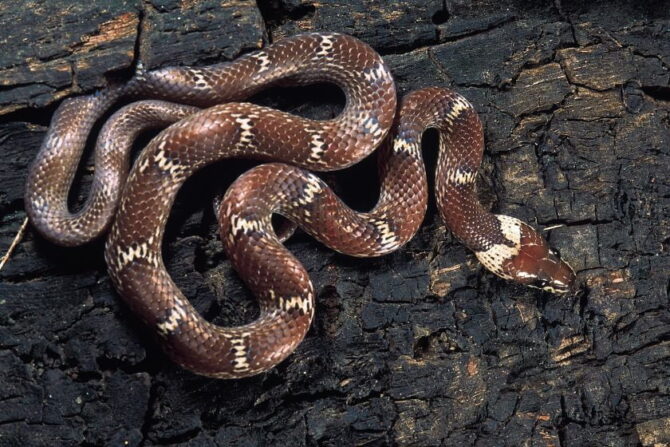
- Scientific name: Lycodon aulicus
- Class: Reptile
- Habitat: Rocky terrain, human habitation, dry hilly areas, grasslands
- Diet: Carnivore
- Conservation status: Not evaluated
The nonvenomous Lycodon aulicus, also known as the Indian wolf snake, lives in the Maldives.
Because of its long, sharp front teeth, which resemble wolves’ teeth, this snake species earned its name.
The Indian wolf snake can be recognized by its slim body and smooth, shining scales that are either brown or brown mixed with a greyish or reddish color.
Despite being frequently mistaken for the common krait, this snake can be distinguished from kraits by the existence of a loreal shield.
The L. aulicus will initially attempt to flee and pretend to be dead in response to provocation.
But when it feels defensive, it will throw its entire body into a loose coil on the ground and attempt to bite.
This snake’s razor-sharp fangs have the potential to lacerate its prey seriously.
Indian wolf snakes are more aggressive than other wolf snake species, despite being quite shy.
6. Blue-ringed Octopus
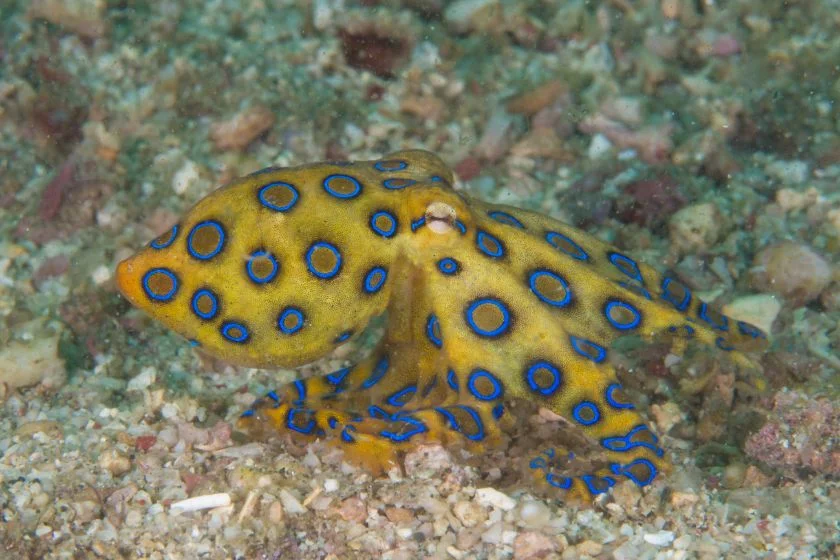
- Scientific name: Hapalochlaena
- Class: Cephalopod
- Habitat: Crevices, under rocks, shallow intertidal marine waters
- Diet: Carnivore
- Conservation status: Not evaluated
The blue-ringed octopus is one of the most venomous aquatic species in the world.
Their venom includes the potent neurotoxin tetrodotoxin, which makes them extremely hazardous to humans if provoked or handled despite their modest size and generally docile disposition.
They can be recognized by their characteristic blue and black rings, which change color dramatically when the animal is attacked, and their yellowish skin.
They consume tiny crustaceans, including crabs, hermit crabs, shrimp, and other tiny marine creatures.
The Maldives Marine Research Institute has issued warnings over this venomous octopus, even though they are not often found in the Maldives.
Recently, there have been recent sightings of these venomous sea critters in the Maldivian sea.
When threatened, these octopuses quickly transform into bright yellow and, within a fraction of a second, each of the 50–60 rings flashes bright iridescent blue as an aposematic warning show.
7. Hard Coral (Stony coral)
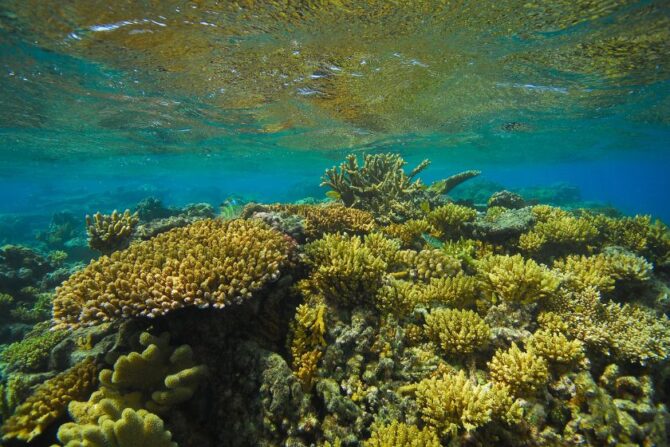
- Scientific name: Scleractinia
- Class: Anthozoa
- Habitat: Oceans, lagoons, reefs
- Diet: Carnivore
- Conservation status: Not extinct
Hard corals build the ecosystem of the coral reef in the Maldives. Each of them is a little creature known as a polyp, which develops in colonies.
These corals are known as hard corals because as they grow, the layers of calcium carbonate under their bodies transform into rock. As a result, these colonies form coral reefs.
There are almost 200 different species of hard corals in the Maldives’ underwater environment.
They might appear to be plants, but corals are animals—one of the Maldives’ most hazardous critters.
Corals can scuff your skin, causing a painful wound that may not heal for months. Yes, corals can be dangerous to people.
Palytoxin, a toxic, naturally occurring chemical found in corals that may be fatal to humans if consumed, can result in severe respiratory distress, bleeding, and even death.
Avoid getting too close to corals, and be aware of your surroundings in the waters.
8. Moray Eel
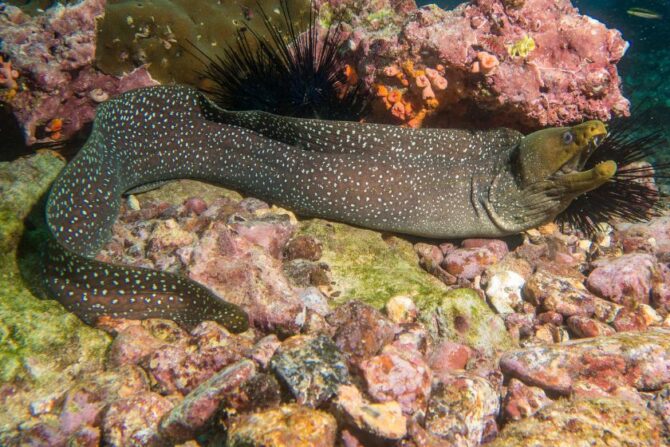
- Scientific name: Muraenidae
- Class: Actinopterygii
- Habitat: Sea walls, rocks pilings, mangroves, coral reefs, tidal creeks, sandy areas
- Diet: Omnivore
- Conservation status: Not extinct
Moray eels are long, slippery fish with piercing yellow eyes and distinctively long jaws.
They might be 6 inches long or up to 12 feet long. These Moray eels can be seen in the Maldives while diving and snorkeling.
Eels can defend themselves by biting with their razor-sharp teeth.
Although the Moray eel’s bites won’t cause death, they can be extremely painful and result in severe injuries.
9. Stonefish

- Scientific name: Synanceia
- Class: Actinopterygii
- Habitat: Coral reefs, under rocks, sands
- Diet: Carnivore
- Conservation status: Not extinct
The stonefish is regarded as the world’s most venomous fish. Its excellent camouflaging skills make it challenging for divers to locate it.
They might go unnoticed by swimmers, who then unintentionally step on them and be stung.
When the stonefish is disturbed, it may spit forth venom in quantity inversely correlated to the pressure exerted on it.
In the Maldives, stonefish are often brown or grey with hints of yellow or red on their bodies.
They also have venomous spikes that pop up when disturbed or threatened—just like lionfish.
According to a recent study, stonefish can extend a lachrymal saber, a sharp, specialized spine, as an extra defense mechanism.
Due to toxins that target cellular membranes, the venom of a stonefish is strong and can cause the affected organism’s cells to deteriorate.
Even after the wound has received the necessary care, the venom can decrease the white blood cell count and cause an infection in the area.
Please keep your distance from anything that resembles a stonefish and avoid provoking it if you spot one.
By approaching it, you risk triggering one of its dorsal fin spines. Its venom has made it the “most venomous fish in the world.”
10. Stingray
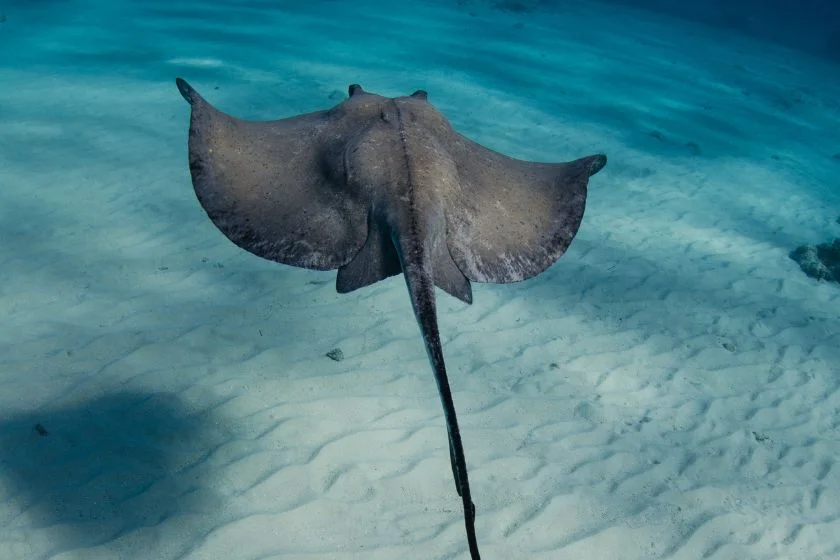
- Scientific name: Myliobatoidei
- Class: Actinopterygii
- Habitat: Shallow coastal waters, warm temperate and tropical water
- Diet: Carnivore
- Conservation status: Endangered
In the Maldives, stingrays are also highly prevalent. Although friendly and excellent snorkeling buddies, stingrays have venomous tails.
When threatened, they defend themselves by using their stinger.
Stingrays are typically located in lagoons with shallow water, and to make themselves look more covert, they dig burrows in the ground and stay in them.
This Maldivian monster can potentially be seriously harmful; 17 stingray deaths have already been documented.
Many travelers have a great phobia of stingrays because of the terrible death of the famous crocodile hunter Steve Irwin in 2006.
Maldives Wildlife Safety Tips
- Be aware of your surroundings and keep alert: The threat is nonexistent if snorkelers avoid handling the reef and divers maintain buoyancy.
- Avoid approaching, feeding, and handling wild animals: These wild animals can be dangerous and unpredictable. They might sense danger from your presence and attack you.
- Do extensive research on the region you’ll be traveling to or staying in: It will be easier to stay educated about prevention measures in an emergency.
- Swim with caution: Never swim alone, and stay out of the water, especially when the red flag is flown on the beach.
Frequently Asked Questions
Are there barracudas in the Maldives?
You will undoubtedly encounter many barracudas if you intend to dive. Although barracudas are very curious fish and may swim up to you, they mean no harm and want to be left alone.
If you come across one, please leave them alone, as they are not interested in being petted or played with by humans. If they bite you, this could lead to an infection or something more serious.
Are there poisonous fish in the Maldives?
One of the most deadly animals in the Maldives is the venomous lionfish and stonefish. When threatened, they will attack. Hence, you should maintain a safe distance.
Are there dangerous sharks in the Maldives?
The great reef shark is the most aggressive shark species in the Maldives, but if you leave it alone, you won’t need to be concerned.
Although there haven’t been any reported shark attacks on the Island, you shouldn’t take fewer precautions around them.
Are there any venomous snakes in the Maldives?
There are currently no known species of venomous snakes in the Maldives. However, you may come across the Indian wolf snake (Lycodon aulicus), which is nonvenomous, despite its imposing fangs.
Are there crocodiles in the Maldives?
Although crocodiles are rarely seen in this island nation, there is a remote chance that you may come across one that has traveled from its native India.
Wrap Up
The Maldives is a beautiful country and a popular tourist destination for its stunning beaches and clear blue waters.
While most people consider this nation a paradise, it is important to know the dangers.
Looking out for the most dangerous animals in the Maldives allows you to enjoy your time in nature while staying safe.
Discover The Most Dangerous Animals in Asia:
